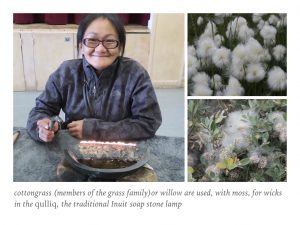I didn't do much undergraduate teaching when I was director of IRIS (York University's now closed Institute for Research and Innovation in Sustainability). My course releases enabled me to attend loads of meetings in place of lectures, where I ate A LOT of baked goods 🍩. I also ground my way through piles of financial, and other administrative paperwork, in lieu of grading student assignments! I doubt students realize how many forms professors also have to deal with!
I was excited about getting back to teaching undergraduate courses, and incorporating all the stuff I had learned from working with colleagues across the university. I added a blogging assignment to the Plant Ecology (see the happy students from that first blogging class in 2014, above!), and Applied Plant Ecology courses. I wanted students to have some form of writing practice that was less daunting than a major research essay, and less nerdy than a laboratory report. In short, some form of science communication that they could easily show their families. In my 2014 field course, my goal was to give students sorely needed practice in communicating about science, via something as simple as a photo and title.

A well written blog post is as accessible as a clear powerpoint slide. My 10th Advent Botany post on Arctic Cotton will be published December 21st, 2017
Like a clear powerpoint slide (right), a well-written blog post requires disciplined thinking and ruthless editing. Writing blogs can also build the confidence of anxious science students. This is because short posts lends themselves to students easily getting and incorporating feedback into a re-write during a semester-long course. Learning to hear and absorb constructive criticism, and then using it to update work, is a skill that we don't emphasize enough in undergraduate degrees around the world.
I continue to blog at this lab website because I want to maintain my hard-earned skills that learned from when I started writing posts back in 2006, as part of our efforts to renovate the prettily-designed but un-dynamic IRIS website. I soon realized that blogging was very different from most forms of academic writing, and a great exercise in science communications.
To get more practice, I also write guest blogs for friends' and colleagues' websites. This is the fourth year that I'm contributing to the Advent Botany blog at the University of Reading, founded by Drs. Jonathan Mitchley and Alastair Culham. My ninth Advent Botany post about cranberries, was published yesterday. These posts have been a way for me to revisit, reflect upon and reinforce the linkages between people and plants that I teach in Plant Biology, as a way to lure students into getting excited about botany!
Writing guest posts lets me do fun field research, like looking for good shots of cranberry juice (above). My next Advent Botany post is on arctic cotton -- plants used in the wicks of the qulliq (kudlik), the traditional Inuit seal oil lamp that lit and warmed snowhouses through the depths of winter. I adapted some of the photos for my post from the powerpoint slide near the top of this webpage. That slide is part of a talk on arctic plants.
If you want to improve your writing and your science communication, then dipping your toe into science blogging isn't a bad idea.



